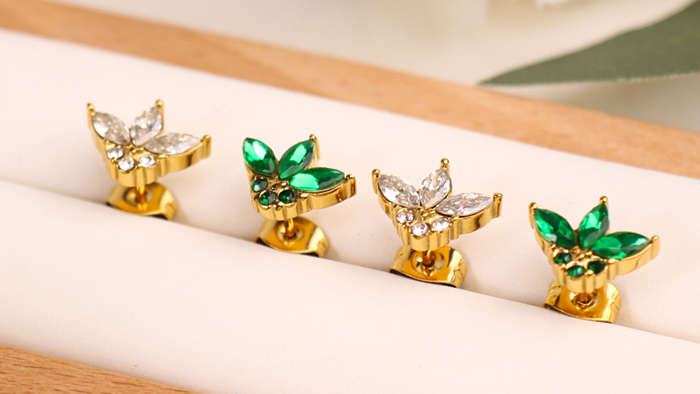Some information about 316L stainless steel jewelry VS 925 sterling silver

When choosing jewelry, the choices often go beyond mere aesthetics. Factors like durability, hypoallergenic and overall value play a vital role in making an informed decision. In this pursuit, two popular contenders often stand out: 316L stainless steel jewelry and 925 sterling silver. While both exhibit unique qualities, they satisfy different preferences and requirements.
316L Stainless Steel Jewelry: Modern Resilience
Stainless steel has transcended its utilitarian origins to become a sought-after material in the jewelry world. 316L stainless steel, in particular, is prized for its contemporary appeal and exceptional sturdiness. Containing iron, chromium, nickel and traces of molybdenum, this alloy has excellent corrosion resistance, making it ideal for jewelry that withstands daily wear and tear and exposure to environmental elements.
One of the defining characteristics of 316L stainless steel is its ability to mimic the luster of precious metals such as platinum and white gold. This makes it an attractive option for individuals looking for affordable alternatives to these costly materials. Plus, the inherent strength of stainless steel ensures that 316L jewelry is virtually scratch-free, dent-proof, and tarnish-proof, guaranteeing a long-lasting shine that stands the test of time.
Additionally, 316L stainless steel is known for being hypoallergenic. People with sensitive skin can wear stainless steel jewelry without fear of irritation or allergic reactions, making it a versatile choice for a wide range of wearers. Its durability and fade resistance also make it a great choice for jewelry that symbolizes a lasting relationship, such as wedding rings.people also love to call surgical stainless steel jewelry;
925 Sterling Silver: Timeless Elegance
Comprised of 92.5% pure silver and 7.5% alloy metal (usually copper), 925 sterling silver has a timeless reputation for its exquisite luster and intricate designs. The brilliance of sterling silver lies not only in its aesthetic appeal, but also in its ability to evoke feelings of sophistication and elegance.
925 Sterling Silver's soft luster complements a variety of gemstones and is often used to create intricate jewelry such as rings, necklaces, and bracelets. Over time, sterling silver develops a patina that enhances its vintage appeal, making it a favorite of those who appreciate jewelry's ever-changing character.
However, the tendency of sterling silver to tarnish may be a concern for some wearers. Discoloration occurs when metal reacts with environmental elements, resulting in a darkened appearance. In order to maintain its original luster, regular cleaning and maintenance is required, especially for jewelry that is worn frequently.
Choosing Your Ideal Jewelry: The Balance of Preferences
Deciding between 316L stainless steel jewelry VS 925 sterling silver is ultimately a matter of personal preference and priorities. If durability, economy, and allergy resistance are paramount, 316L stainless steel jewelry may be a better choice. On the other hand, if you're looking for the elegance of a precious metal and don't mind the occasional upkeep, 925 sterling silver might be the perfect choice.
In the world of jewelry, 316L stainless steel VS 925 sterling silver have both found their places, each with its own unique appeal to suit different styles and requirements. As you make your selections, consider the qualities that resonate with you the most, and imagine how your chosen pieces will complement your personal style and lifestyle.





